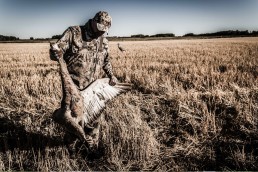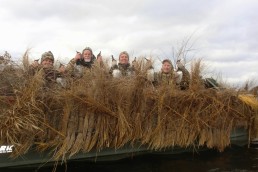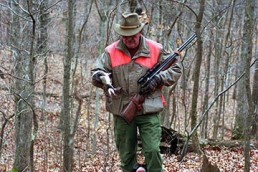Hunting Sandhill Cranes on the Prairies
SHARE THIS POST
When I was asked to go on a sandhill crane hunt by Paul Conchatre of Birdtail Waterfowl, I had no idea what to expect. I had grown up hunting for geese and ducks in southwestern Manitoba, but sandhills hadn’t been an option. Since that time in the early ’60s, the population of these prehistoric birds has risen steadily in this part of the world, to the point now there is an open fall season.
Sandhills didn’t survive all these years by being dumb, so hunting them is an exhilarating challenge. Luckily, over the course of the next two days, I was able to get a crash course from two of the best in the business: Paul and his father Mike Conchatre. Paul founded Birdtail Waterfowl 17 years ago. Now, with Paul in charge, this operation has become one of the premier waterfowl outfitters in Canada.
Mike has been guiding for his son for 14 years, ever in the process of fine-tuning the art of hunting these wary birds.
Upon arrival at their lodge, our first order of business was to go scouting for the hunt the next morning. I headed out with Mike, and we covered miles and miles of pothole country on the southwestern edge of Manitoba. It took awhile, but we finally found a field littered with these wary birds. Mike had his binoculars along, and we checked out the field from long range.
“No use spooking them,” he stated.
With his laptop beside him and smartphone in hand, in no time we had the landowner on the line and permission granted. Later that evening, final plans were laid out for the hunt the next day.
Keys to the hunt
Sandhills have very keen eyesight, look huge in the air and are tough to knock down. They are also difficult to decoy, and will not come into a field if there is anything unusual going on. That means retrieving your birds after they are down. Also make sure that birds are dead before you send a dog to retrieve them because sandhills have deadly-sharp beaks and claws that can inflict serious damage.
Are you enjoying this post?
You can be among the first to get the latest info on where to go, what to use and how to use it!
Mike was in charge of setup, so first thing out were the decoys—full-bodied ones, about three dozen in total. This was the first hunt of the season, so more were not needed. Later on, that number of decoys will go up to attract wary birds.
Laydown blinds were set up along a small island of grass and rock in the middle of the field. Mike made sure to check everyone’s cover—an important point considering the excellent eyesight these birds possess. With a couple of guides set up the other side of the grass island to make sure no birds snuck in from behind, we were almost done. Two of the other guides were designated as callers, and we were ready to go.
Sandhill crane family units are usually three, so you will get multiples of this number. Since they don’t all arrive at the same time, you can do quite well and not spook the whole group. We used decoys and field hunted during this trip, but some hunters will pass shoot. Since sandhills roost on big sloughs overnight, they like to go out to fields close by during the day.
In interviewing Mike Conchatre that evening, he was dead set against hunting the sloughs on which these birds roost. He says if you do, you risk losing birds from the area for up to six years. They are also tough to track down in the marsh grass and water, which also provides an extreme danger to your dogs.
For years, people have been saying that sandhill cranes are not good to eat. Don’t believe this. Those in the know love to eat these birds. Marinate them in something bubbly like 7UP for 12 hours and then cook them medium rare. Enjoy.
If you want to experience this extremely rare hunt, contact Paul at birdtailwaterfowl.com. Manitoba is one of the few jurisdictions in North America where you can legally hunt these cranes.
MWO
SHARE THIS POST
Did you enjoy this post?
You can be among the first to get the latest info on where to go, what to use and how to use it!
Don Lamont
Don Lamont has been a full-time outdoors educator for 35 years. He is currently writing for a number of different publications. He lives in Winnipeg, Manitoba, fishing and hunting western Canada.



